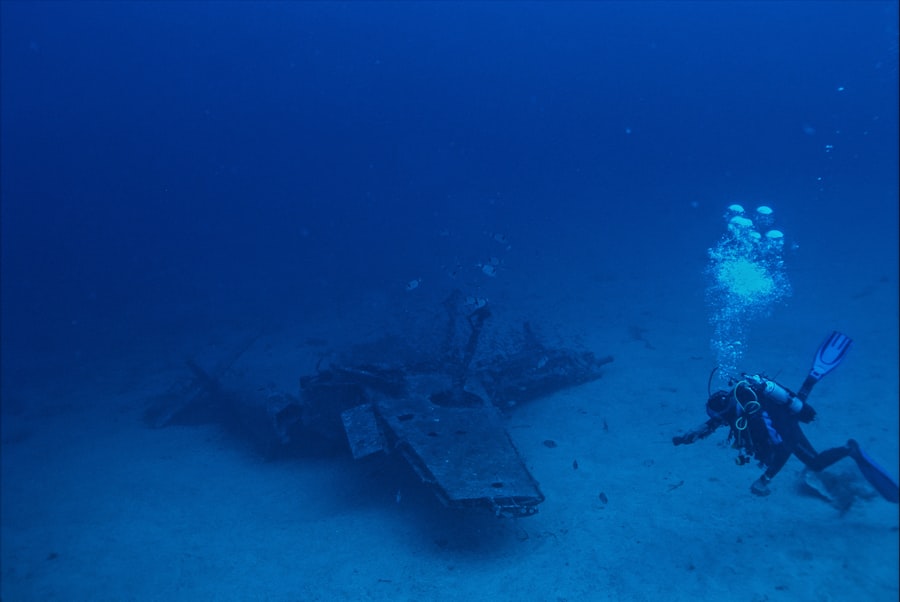Submarine endurance is a critical aspect of naval warfare, representing the ability of submarines to operate effectively for extended periods without surfacing. This capability is not merely a function of fuel or supplies; it encompasses a range of factors including stealth, technology, and operational strategy. The endurance of a submarine allows it to remain undetected while gathering intelligence, conducting surveillance, or preparing for strategic strikes.
As nations invest in their naval capabilities, the importance of submarine endurance has only grown, making it a focal point in modern military doctrine. The evolution of submarine technology has significantly enhanced endurance capabilities over the years. From the early diesel-electric submarines that required frequent surfacing to recharge batteries, to the advanced nuclear-powered submarines that can operate submerged for months at a time, the journey has been remarkable.
This transformation has not only changed the way submarines are deployed but has also influenced global naval strategies. As countries seek to assert their influence on the world stage, the endurance of their submarine fleets becomes a vital component of their military readiness and deterrence capabilities.
Key Takeaways
- Submarine endurance is crucial for prolonged underwater operations and strategic advantage.
- Silence and stealth are essential for submarine operations to avoid detection and maintain tactical advantage.
- Technology plays a vital role in enhancing submarine endurance through advanced propulsion and life support systems.
- Nuclear-powered submarines offer extended endurance and operational capabilities compared to conventional diesel-electric submarines.
- Submarines utilize sonar and acoustic technology to maintain stealth and detect potential threats in their environment.
The Importance of Silence and Stealth in Submarine Operations
Silence and stealth are paramount in submarine operations, as they directly influence a submarine’s ability to evade detection by enemy forces. The very essence of submarine warfare lies in remaining undetected while executing missions that could range from reconnaissance to offensive strikes. A silent submarine can gather intelligence without alerting adversaries, providing a strategic advantage that can be pivotal in conflict scenarios.
The ability to operate in silence allows submarines to approach targets closely and launch attacks with minimal risk of counteraction. Moreover, the psychological impact of stealth cannot be underestimated. The mere presence of a silent submarine in enemy waters can create uncertainty and fear, potentially deterring hostile actions.
This psychological warfare aspect is crucial in maintaining peace and stability, as adversaries may think twice before engaging in aggressive maneuvers if they suspect that a silent predator lurks beneath the waves. Thus, silence is not just a tactical advantage; it is a fundamental principle that underpins the effectiveness of submarine operations.
The Role of Technology in Enhancing Submarine Endurance

Advancements in technology have played a pivotal role in enhancing submarine endurance. Modern submarines are equipped with sophisticated systems that allow them to operate more efficiently and for longer durations. For instance, advancements in battery technology have improved energy storage capabilities, enabling diesel-electric submarines to remain submerged longer without surfacing.
Additionally, innovations in air purification systems allow submarines to recycle air more effectively, extending the time crews can spend underwater. Furthermore, the integration of advanced materials and design techniques has led to quieter hulls and improved hydrodynamics. These innovations reduce drag and noise, allowing submarines to move stealthily through the water while conserving energy.
The development of automated systems also contributes to endurance by reducing the need for crew intervention in routine operations, allowing personnel to focus on critical tasks and decision-making. As technology continues to evolve, it is expected that future submarines will achieve even greater levels of endurance and operational capability.
The Advantages of Nuclear-Powered Submarines
| Advantages of Nuclear-Powered Submarines |
|---|
| 1. Extended Endurance |
| 2. High Speed |
| 3. Reduced Refueling Needs |
| 4. Enhanced Stealth |
| 5. Power for Advanced Systems |
| 6. Strategic Deterrence Capability |
Nuclear-powered submarines represent a significant leap forward in submarine endurance and operational flexibility. Unlike their diesel-electric counterparts, nuclear submarines can operate underwater for extended periods without the need to surface for air or fuel.
The independence from surface support not only enhances their stealth but also provides strategic advantages in terms of deployment and response times. Additionally, nuclear-powered submarines can travel at higher speeds while submerged compared to traditional submarines. This speed allows them to reposition quickly in response to emerging threats or opportunities, making them invaluable assets in dynamic maritime environments.
The combination of extended endurance and rapid mobility ensures that nuclear submarines can effectively project power and influence across vast oceanic expanses, reinforcing their role as key components of national defense strategies.
How Submarines Utilize Sonar and Acoustic Technology for Stealth
Sonar and acoustic technology are integral to the stealth capabilities of submarines. These systems allow submarines to detect and track other vessels while minimizing their own acoustic signature. By employing advanced sonar systems, submarines can gather critical information about their surroundings without revealing their position.
This capability is essential for avoiding detection by enemy forces and for executing missions with precision. Moreover, submarines utilize passive sonar systems that listen for sounds generated by other vessels rather than actively emitting signals that could give away their location. This approach enhances stealth by allowing submarines to remain undetected while still gathering vital intelligence.
The continuous evolution of sonar technology, including improvements in signal processing and data analysis, further enhances the effectiveness of these systems, ensuring that submarines can operate with a high degree of situational awareness while maintaining silence.
The Impact of Submarine Endurance on National Security

The endurance of submarines has profound implications for national security. A capable submarine fleet enhances a nation’s deterrence posture by providing a credible threat against potential adversaries. The ability to maintain a persistent presence in strategic waterways allows nations to project power and influence without resorting to overt military action.
This capability is particularly important in regions where tensions may escalate rapidly, as it provides decision-makers with options that do not involve immediate confrontation. Furthermore, submarine endurance plays a crucial role in intelligence gathering and surveillance operations. By remaining submerged for extended periods, submarines can monitor enemy activities and gather critical information that informs national defense strategies.
This intelligence can be vital for preemptive actions or for shaping diplomatic negotiations. As such, the endurance of submarines is not merely a tactical consideration; it is a strategic asset that contributes significantly to a nation’s overall security framework.
The Challenges of Maintaining Submarine Silence and Stealth
Despite the advancements in technology and design, maintaining silence and stealth remains a formidable challenge for submarine operations. Various factors can compromise a submarine’s ability to remain undetected, including environmental conditions such as ocean currents and background noise from marine life or other vessels. These external factors can interfere with sonar systems and make it more difficult for submarines to operate quietly.
Additionally, human factors play a significant role in maintaining stealth. Crew training and discipline are essential for ensuring that all personnel adhere to protocols designed to minimize noise and maintain operational security. Even minor lapses can lead to increased acoustic signatures that could expose a submarine’s position.
As such, continuous training and rigorous adherence to operational procedures are critical components of successful submarine operations.
The Training and Skills Required for Submarine Operations
Operating a submarine requires a unique set of skills and extensive training due to the complex nature of underwater warfare. Crew members must be proficient in various disciplines, including navigation, engineering, weapons systems operation, and emergency procedures. The training process is rigorous and often involves simulations that replicate real-world scenarios to prepare personnel for the challenges they may face during missions.
Moreover, teamwork is essential in submarine operations. Crew members must work cohesively under pressure, often in confined spaces with limited resources. Effective communication is vital for ensuring that all personnel are aware of their roles and responsibilities during operations.
This emphasis on teamwork extends beyond technical skills; it fosters camaraderie and resilience among crew members, which is crucial for maintaining morale during long deployments.
The Future of Submarine Endurance: Advancements and Innovations
The future of submarine endurance is poised for significant advancements driven by ongoing research and technological innovation. Emerging technologies such as artificial intelligence (AI) and machine learning are expected to enhance decision-making processes aboard submarines, allowing for more efficient operations and improved situational awareness. These technologies could enable submarines to analyze vast amounts of data from sonar systems more effectively, leading to better threat detection and response capabilities.
Additionally, advancements in energy storage technologies may further extend the operational capabilities of both nuclear and non-nuclear submarines. Innovations such as advanced battery systems or hybrid propulsion methods could provide new avenues for enhancing endurance while maintaining stealth capabilities. As nations continue to invest in their naval forces, the integration of these technologies will likely redefine the landscape of submarine operations in the coming decades.
The Environmental Impact of Submarine Operations
While submarines play a crucial role in national security, their operations also raise environmental concerns that warrant attention. The construction and maintenance of submarines can have significant ecological impacts, particularly when considering the materials used and the energy consumed during operations. Additionally, the potential for accidents or leaks poses risks to marine ecosystems.
Efforts are being made within naval forces worldwide to mitigate these environmental impacts through sustainable practices and technologies. For instance, some navies are exploring alternative propulsion methods that reduce emissions or utilizing materials that minimize ecological footprints during construction. As awareness of environmental issues grows globally, it is likely that future submarine designs will increasingly prioritize sustainability alongside operational effectiveness.
Concluding Remarks: The Continued Significance of Silent and Stealthy Submarines
In conclusion, the significance of silent and stealthy submarines cannot be overstated in contemporary military strategy. Their endurance capabilities provide nations with unparalleled advantages in terms of deterrence, intelligence gathering, and operational flexibility.
The challenges associated with maintaining stealth highlight the need for ongoing training and innovation within naval forces worldwide. As nations navigate an increasingly complex geopolitical landscape, the role of submarines will remain vital in ensuring national security while adapting to new technological advancements and environmental considerations. Ultimately, silent and stealthy submarines will continue to be indispensable assets in safeguarding maritime interests well into the future.
In exploring the secret of submarine endurance, it’s fascinating to consider the technological advancements and strategic innovations that have been pivotal in extending the operational capabilities of these underwater vessels. A related article that delves into the broader context of military technology and strategy can be found on the website “In The War Room.” This article provides insights into the various factors that contribute to the endurance and effectiveness of submarines in modern warfare. For more detailed information, you can read the article by visiting In The War Room.
WATCH THIS! America’s Nuclear Navy Was Born From Espionage
FAQs
What is the secret of submarine endurance?
The secret of submarine endurance lies in its ability to generate its own oxygen, recycle air, and produce its own fresh water, allowing it to remain submerged for extended periods of time.
How do submarines generate their own oxygen?
Submarines generate their own oxygen through the process of electrolysis, which involves splitting water molecules into hydrogen and oxygen using an electrical current. The oxygen produced is then used to replenish the submarine’s air supply.
How do submarines recycle air?
Submarines recycle air using a system called the Carbon Dioxide Scrubber, which removes carbon dioxide from the air and replenishes it with oxygen. This allows the submarine to maintain a breathable atmosphere for its crew while submerged.
How do submarines produce their own fresh water?
Submarines produce their own fresh water through a process called desalination, which involves removing salt and other impurities from seawater to make it suitable for drinking and other uses. This allows submarines to sustain their crew with a reliable source of fresh water while submerged for long periods.
What other factors contribute to submarine endurance?
In addition to generating oxygen, recycling air, and producing fresh water, submarine endurance is also influenced by factors such as the efficiency of its power systems, the design of its hull and propulsion systems, and the skill and training of its crew.




